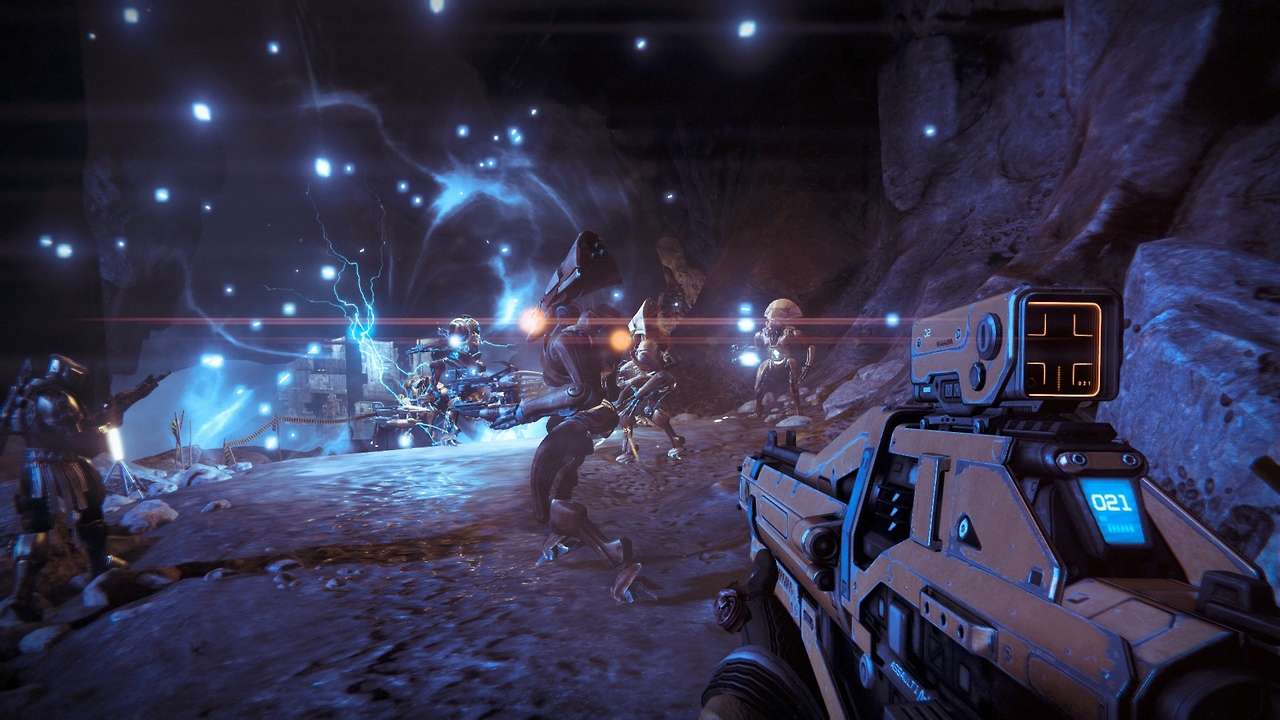TL;DR
Bungie's Destiny mixes FPS action with RPG elements for a potentially great but flawed experience. While the gunplay and progression shine once you get past the repetitive early grind and reach level 20, the always-online requirement is a major headache. Disconnections can erase hours of progress, and the sparse MMORPG elements feel underdeveloped. Despite impressive visuals and sound, Destiny doesn't quite revolutionize the genre, and its ambition is hampered by connectivity issues and a lack of solo content. Discover the underlying potential of Destiny, but be warned about its frustrating technical hurdles.
The anticipation surrounding Halo creators Bungie’s new FPS, Destiny, has been significant. Renowned for developing one of the most iconic first-person shooter franchises with Master Chief as the protagonist, exclusively for Microsoft’s Xbox consoles, Bungie is now venturing into multi-platform territory, integrating FPS mechanics with online and MMORPG elements. This is an ambitious, intriguing, and ultimately somewhat flawed concept.
Narrative depth and compelling characters have not traditionally been Bungie’s forte, and this holds true here. Players are presented with a relatively generic sci-fi narrative: Earth’s “Golden Age” is imperiled by a malevolent force and an array of adversarial races (The Fallen, The Hive, and later The Vex and Cabal), from which you, along with other Guardians, must liberate humanity. Players select their class – the aggressive Titan, the precision-focused Hunter, or the Jedi-inspired Warlock. This classic role-playing structure allows for the creation of a character from each class, facilitating parallel progression and development. Character customization extends to race, gender, and detailed features like eye color, face markings, and facial structure.
Veterans of the Halo series will find the controls and overall setup familiar. The first-person perspective displays the character’s arms and weapon, adhering to FPS conventions. The game transitions to a third-person view in social spaces (where missions are acquired and interactions with NPCs occur), while piloting vehicles reminiscent of those in Return of the Jedi, or during the execution of special abilities. The core gameplay loop is straightforward, but the initial hours can feel repetitive and somewhat monotonous. Character progression is achieved through mission completion, typically involving eliminating a specified number of enemies, acquiring designated items, or utilizing your AI companion to scan alien technology. The primary issue is the repetitive nature of the leveling process. Enemy placements and formations remain largely static, leading to a sense of tedium. However, after approximately 4-5 hours, particularly upon reaching level 20, Destiny evolves significantly. At this point, players gain access to Raids – large-scale cooperative missions undertaken with other players, often requiring several hours to complete. This is where Destiny showcases its potential for the future of engaging FPS games.
The “potential” is emphasized because Destiny’s mandatory online requirement presents a significant drawback. The primary reason is the reliance on a central server for all gameplay; progress cannot be saved mid-mission (with the exception of level advancement). Consequently, any disconnection from the server, regardless of cause (server issues, connection instability), necessitates replaying the entire mission from the beginning. Despite utilizing high-end networking equipment in our testing environment, we experienced multiple server disconnections during the review period, resulting in considerable frustration. This echoes the Diablo III scandal upon its PC and Mac release. While Diablo III at least offered intermittent save points and periods of complete inaccessibility due to server issues, Destiny typically allows initial game access, but is prone to mid-mission disconnects, potentially resulting in an hour of lost progress. The intention behind the always-online framework – as posited by senses.se, until ubiquitous high-bandwidth connections and robust server infrastructure are available – was to incorporate MMORPG elements into Destiny. This would allow players to encounter and interact with other Guardians within their game session, facilitating cooperative gameplay. While conceptually appealing, the implementation leaves something to be desired.
In practice, Destiny’s MMORPG elements introduce more problems than benefits (aside from the aforementioned Raids). Given the game’s sales figures, the environments should be populated with numerous players. Instead, encounters are limited to isolated individuals scattered sparsely across the landscape. Some may quickly pass by on their speeders, while others engage in combat with enemies outside of your current objective. Despite being presented as a “living galaxy,” Destiny often feels desolate and isolating. Compounding this issue is the complete absence of a single-player campaign or solo narrative experience. Players are required to engage with the online component, regardless of preference. Even if the story is not the primary draw of Destiny, the decision to force constant connectivity – particularly given the potential for connection-related issues – to simply enjoy FPS action with RPG elements is questionable.
The graphics in Destiny can be characterized as generally competent, but inconsistent. Impressive celestial vistas, nuanced color palettes, and captivating lighting effects are present throughout the environments. However, given the game’s protracted development cycle and its availability on last-generation consoles (PS3 and Xbox 360), concessions have been made to accommodate older hardware (although the game exhibits visual improvements on PS4 and Xbox One). Texture resolutions are sometimes low, and character models occasionally lack detail. While the 30fps framerate is functional, the smoothness and responsiveness of the 60fps experience offered in titles like BF4, Wolfenstein, and COD: Ghosts are missed. The audio design is superior, with accurate surround sound effects that aid in enemy localization. The familiar, quasi-religious choral music from Halo is present, and weapon sounds, combined with enemy vocalizations, are well-executed. The controls are responsive, and despite a slight learning curve associated with the speeder controls, Destiny offers a comfortable and precise aiming experience.
Destiny has already achieved record sales and represents one of the most pre-ordered releases since the latest GTA or Blizzard title. Consequently, reviews may have limited impact on its commercial success. Moreover, meeting the extraordinary levels of hype – comparable to that of Watch Dogs, another title purported to revolutionize its genre but ultimately only refined existing concepts – is an unrealistic expectation. The Halo series remains a benchmark, and Bungie retains its proficiency in crafting engaging PvP FPS experiences and expertly designed levels. The central issue is that Destiny does not significantly innovate or revolutionize the genre. It is a competent FPS and action game that provides increasing rewards as players invest time. However, the always-online requirement is insufficient to compensate for its inherent problems – unreliable servers and unstable connections that can negate significant progress. This is unfortunate, as beneath Destiny’s uninspired opening, underdeveloped narrative, and connectivity issues lies a genuinely compelling shooter that rewards player investment. New weapons, protective gear, and character abilities (such as gravity-defying double jumps and area-of-effect slams) are available to discover and develop. Ideally, a well-developed, 10-12 hour single-player campaign spanning Earth, the Moon, Venus, and Mars would be a welcome addition. Instead, the game is frequently interrupted by loading screens and repetitive traversal between locations, performing similar tasks. The concern is that many players may abandon the game before realizing its underlying potential.
If Bungie addresses server stability (and ideally introduces a solo mode via a future patch), the groundwork for a new and enduring franchise that challenges and enhances the Halo formula could be established. However, a focused approach on their strengths is necessary, rather than incorporating less successful elements. The RPG progression is well-implemented; the MMORPG aspects are less so. Destiny does not convey the impression of being inherently superior as an online, multiplayer experience – the multiplayer should serve as an optional enhancement. In 2014, with the fluctuating state of global network infrastructure, a mandatory “always-online” mode remains a suboptimal choice.


